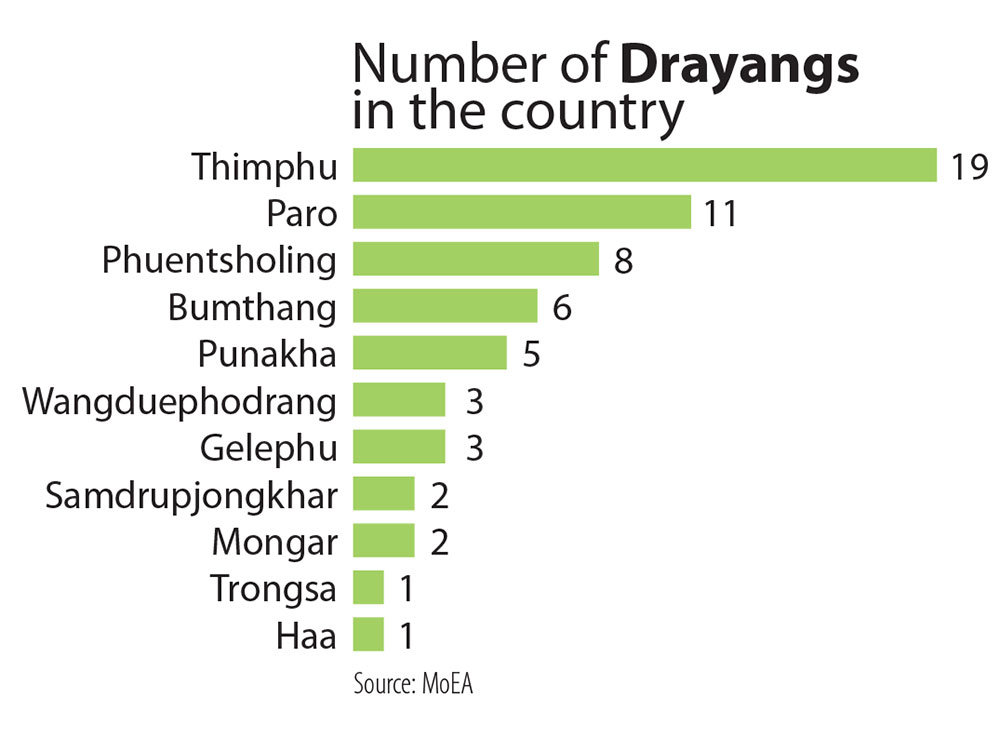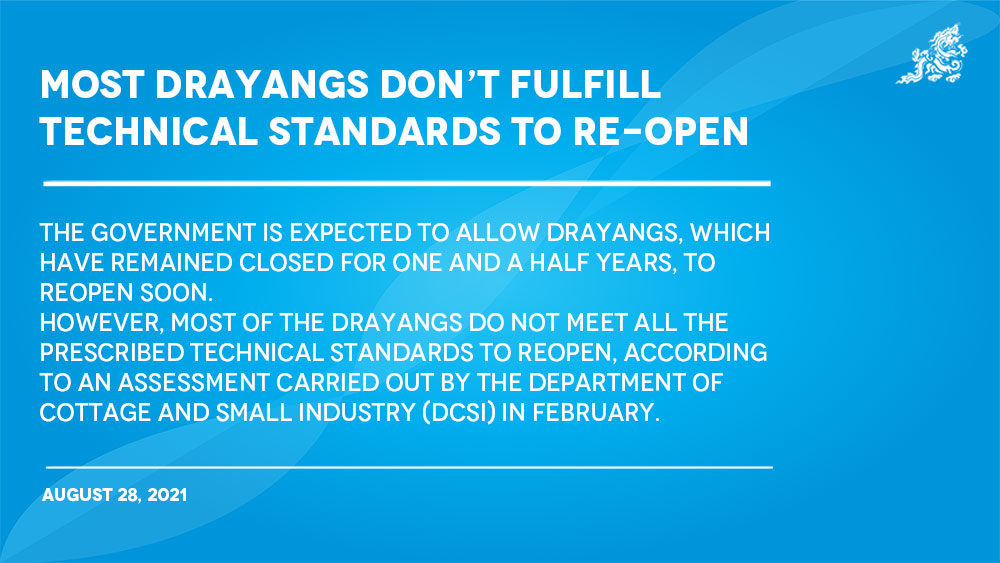MB Subba
The government is expected to allow drayangs, which have remained closed for one and a half years, to reopen soon.
However, most of the drayangs do not meet all the prescribed technical standards to reopen, according to an assessment carried out by the Department of Cottage and Small Industry (DCSI) in February.
The DCSI assessed 61 drayangs, out of which 29 of them were found to have the scope to fulfill the technical standards set by the government. However, these drayangs will need to improve or modify the establishments with installation of CCTV, sound proof walls, opening emergency exit doors, separate changing rooms and kitchens among other facilities.
A total of 24 existing drayangs do not have any scope of fulfilling the technical standards in the existing locations or establishments. This means that among the 61 drayangs, only eight fulfill the standards to reopen in their current forms.
Of the 29 drayangs who can reopen after fulfilling the standards, only 14 were willing to comply with the new Standard Operating Procedure (SOP), which drayangs must follow when re-opened.
The SOP was developed based on the findings of the “country and way forward for their transformation” published by the alumni of RIGSS, “situation of female draying employees in Paro and Phuentsholing” carried out by National Commission for Women and Children (NCWC) in 2017 and the DCSI’s assessment report.
Based on the reports, the Cabinet has directed stakeholders to prohibit the request system in any form as the studies conclude that the system of soliciting performance requests from customers is the root cause of all undesirable social behaviours associated with drayang and its employees.

This “request” system made drayang employees vulnerable to all forms of exploitation by customers, as per the studies.
Prime Minister Dr Lotay Tshering at the press session yesterday said that the proposed reforms would include a menu system for requests for songs and dances.
“With the proposed reform measures, drayangs are now expected to explore other sources of revenue generation as a substitute for the request system.” One of the viable alternatives for drayangs, he said, was providing restaurant and bar services.
Based on the findings, the Ministry of Economic Affairs (MoEA) in its report “joint report on reforming drayangs” has recommended that the operational timing for drayangs need to be relaxed and made similar to that of restaurants and bars.
“A drayang is perceived as a place where people consume alcohol and seek sexual pleasures, while the workers there are assumed to be of low moral character,” the joint report states, adding that such prejudice has resulted in social discrimination for drayang employees and engendered various other social issues.
It recommended that it was important to provide capacity building programmes such as cultural orientation, dancing and singing skills. The certification and training of drayang employees and performers by linking up with institutions such as Royal Academy of Performing Arts (RAPA) and other relevant agencies may be considered, it added.
Drayangs, it recommends, should have safety standards like having separate emergency exits and adequate ventilations.
The report states that the government can consider providing financial support in the form of soft loans to those drayangs if they can undertake the improvement works to fulfill the specified technical standards.
The NCWC’s study found that 63 percent of the female drayang employees were mothers and 28 percent of those mothers did not have anyone to sit and take care of their children while they went to work. It also found that the majority of the drayangs did not provide the transportation service to their employees despite having odd working hours.
This was observed as one of the reasons for sexual exploitation of drayang employees by customers.
The joint report also recommends mandatory implementation of internal service rules approved by the labour ministry to enhance the employment conditions including safety and protection of employees from all sorts of abuse and exploitation.
Although the rules mandate drayangs to have fire extinguishers in their establishments, it was found that many do not know the handling procedure.
The joint report recommends the government to consider granting a reasonable amount to the drayangs that opt to close as compensation in view of the investment they have already made.
The prime minister said that drayangs initially began as an entertainment center, where people could enjoy traditional music, local cuisines, arts and folklores. He said that the primary objective of the sector in the past was to promote culture and provide modest employment opportunities for people.
However, it was found that the proliferation of drayang establishments over the years has diluted the essence and objective of its establishment with profit-maximization becoming the primary motive.


